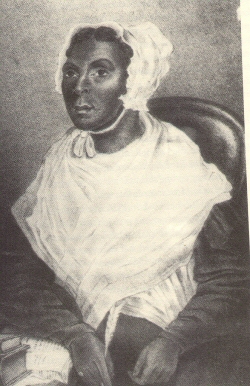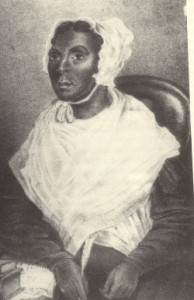
Concluding this week’s theme, here are the last 5 facts…
FACT 1:In 1829, David Walker of Boston publishes An Appeal to the Colored Citizens of the World which calls for a slave uprising in the South.
The fiery-militant David Walker was born on September 28, 1785, in Wilmington, North Carolina. His father was an enslaved African who died a few months before his son’s birth, and his mother was a free woman of African ancestry. Walker grew up to despise the system of slavery that the U.S. government allowed in America. He knew the cruelties of slavery were not for him and said, “As true as God reigns, I will be avenged for the sorrow which my people have suffered.” He eventually moved to Boston during the 1820s and became very active within the free black community. Walker’s intense hatred for slavery culminated in him publishing his Appeal to the Colored Citizens of the World in September 1829. The Appeal was smuggled into the southern states, and was considered subversive, seditious, and incendiary by most white men in both northern and southern states. It was, without a doubt, one of the most controversial documents published in the antebellum period.
Walker was concerned about many social issues affecting free and enslaved Africans in America during the time. He also expressed many beliefs that would become commonly promoted by later black nationalists such as: unified struggle for resistance of oppression (slavery), land reparations, self-government for people of African descent in America, racial pride, and a critique of American capitalism. His radical views prompted southern planters to offer a $3000 bounty for anyone who killed Walker and $10,000 reward for anyone who returned him alive back to the South. Walker was found dead in the doorway of his Boston home in 1830. Some people believed he was poisoned and others believed that he died of tuberculosis.
In 1830, African American delegates from New York, Pennsylvania, Maryland, Delaware and Virginia meet in Philadelphia in the first of a series of National Negro Conventions to devise ways to challenge slavery in the South and racial discrimination in the North.
FACT 2:In 1831, Jarena Lee’s The Life and Religious Experience of Jarena Lee, A Coloured Lady, was the first autobiography by an African American woman.
Born in Cape May, New Jersey, the early years of Jarena Lee were spent working as a domestic servant. In her twenties, she was converted, sanctified, and received a call to preach. When her request for approval to preach was rebuffed by the African Methodist Episcopal Church, she married an AME minister. His death within a few years of the marriage left Lee a widow with two young children. In order to support her family she renewed her request to the Rev. Richard Allen, the Bishop of the African Methodist Church who then granted her official church approval to preach.
Lee’s evangelistic meetings took place in her home city of Philadelphia and also throughout New England, Canada and west into Ohio. She recounted her meetings in her autobiography, the first to be published in the United States by an African American woman. In that autobiography, Lee frequently mentions the denominational and racial composition of her audience, which, in both cases, was quite inclusive. Between 1849 and 1857, there is no recorded history about her. The last known event in her life was a visit she made to the home of Rebecca Cox Jackson, a Shaker leader, on New Year’s Day in 1857. After that occasion, at the age of 73, nothing is known about her life or death.

